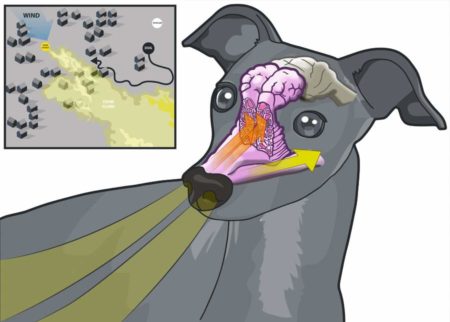How does a dog’s nose work?
The next time you catch a whiff of something bad, remember how lucky you are not to have a dog’s super strong sense of smell
Depending on the breed, a dog’s sense of smell is between 10,000 and 100,000 times better than our own. They can detect a specific substance in a solution when it’s been diluted so much that it only makes up a trillionth of the mixture. This ability would have helped them
to track prey in the wild, and it’s made them indispensable today in searches for illegal substances, explosives and even people.
As well as being able to find the source of a smell, dogs can also obtain detailed information with their noses. The scent from a canine’s anal gland can tell other dogs about their age, sex, health and even their diet; it’s why they sniff each other’s behinds when they first meet.
Dogs inhale through the large openings of their nostrils but exhale through slits at the sides to avoid pushing out a scent. They can move each nostril independently and can tell which nostril a scent reached first. This allows them to locate the direction a smell is coming from. A small flap separates incoming air.
While most goes to the respiratory system, about ten per cent is directed to the back of the nose to be analysed by the olfactory system. The olfactory epithelium of a dog covers 150 square centimetres (23.3 square inches) and can contain 300 million scent receptors depending on the breed, compared to just 5 or 6 million in a human. Information from the olfactory epithelium is processed in the brain by the olfactory bulb. Relative to body size, a dog’s olfactory bulb is around 40-times larger than ours.

For more science and technology articles, pick up the latest copy of How It Works from all good retailers or from our website now. If you have a tablet or smartphone, you can also download the digital version onto your iOS or Android device. To make sure you never miss an issue of How It Works magazine, subscribe today!





